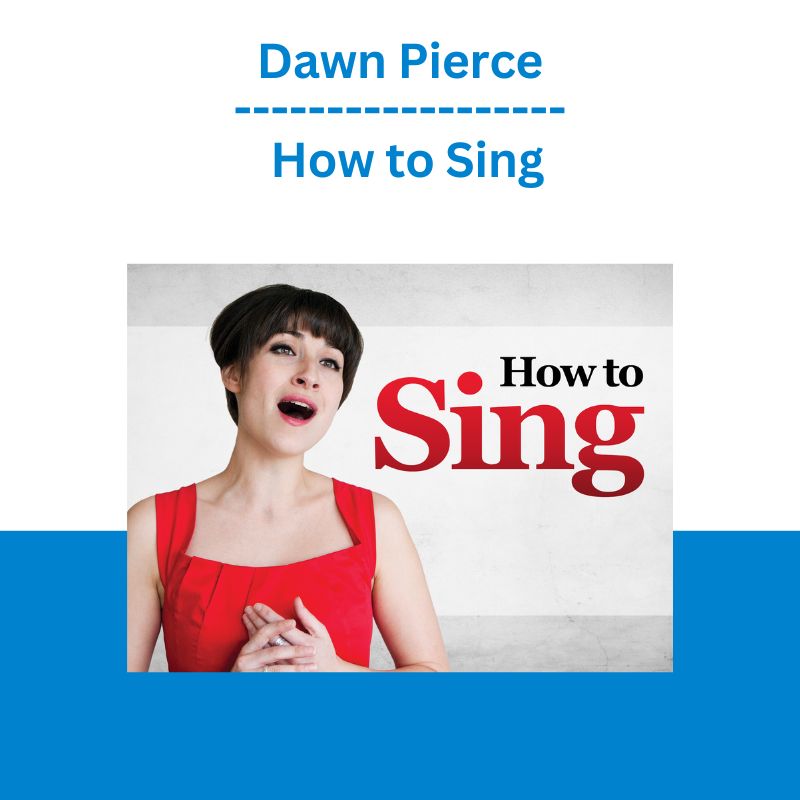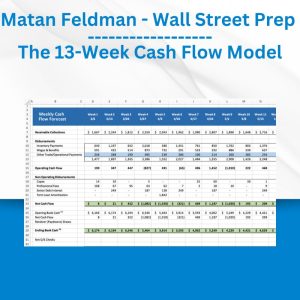*** Proof of Product ***

Exploring the Essential Features of “Dawn Pierce – How to Sing”
How to Sing
We didn’t think we could carry a tune in a bucket. But after these easy lessons, we kicked the bucket (in the right way)!
LESSON
Trailer
01:Anyone Can Sing
Begin the course with a first look at the physiology of singing, as it represents a refined coordination of posture, breath, and tone. Learn about the approach you’ll study in this course, based in a thorough view of the science of singing, as well as the art of vocal expression. Then practice basic vocalizations for freeing the voice and testing your range, and finish with a familiar song.
35 min
02:Vocal Warm-Ups
Learn effective vocal warmups, to build proper coordination and balance for your most beautiful singing. Consider the physiological benefits of warmups, and how to care for your vocal instrument. To begin, practice full-body warmup exercises. Follow this with vocal exercises for energizing your breath, engaging with tone, sharpening vocal agility and vowel production, and increasing resonance and range.
48 min
03:Aligning the Spine
A flexible alignment is the foundation for solid vocal technique. Study the structure of the spine and practice exercises to find a free and dynamic posture for your best sound production. Examine lower body and pelvic alignment and note how these affect your singing. Also learn how slightly elevating the sternum and strengthening the back and shoulder muscles help free the breath.
47 min
04:Head and Neck Posture
Explore head and neck alignment that support a freely functioning vocal mechanism. Visualize the cervical spine and its seven vertebrae, and grasp why head position is crucial for ease in vocal vibration. Practice a range of movements and exercises to experience how vocal tone is affected by head posture, to learn how to maintain a free neck alignment, and to find your optimal, dynamic posture for singing.
47 min
05:How to Practice Anything
Regular and effective practice is crucial for developing your singing skills. Study three primary facets of efficient practice: Evaluate your progress; strategize a plan of action, and integrate your new skills. Grasp what a typical practice session will look like, from your warmup and assigned exercises to applying your new abilities to the music. Also, remember to sing for fun!
29 min
06:The Anatomy and Physiology of Breath
Now focus on the respiratory system, a foundational element for singing. Get to know the organs and structures that come into play when you sing: the airway, the lungs, the muscles of respiration, and the motions of inhalation and exhalation. Work with exercises to increase flexibility, lung capacity, and the function of your breathing, with both immediate and long-term benefits for singing.
42 min
07:Inhalation for Singing
Take a closer look at the important role of inhalation in vocal technique. Explore three kinds of breath: clavicular (the upper chest), thoracic (the ribcage), and diaphragmatic (the lower abdomen). Then practice a gentle, three-part yoga breath that uses all of them. Next, apply this holistic way of breathing to a song, maintaining a dynamic posture and guiding your inhalation to release low into your body.
33 min
08:Exhalation for Singing
In vocal technique, consider how the quality of the exhalation determines the quality of the inhalation. Study the appoggio technique, which focuses on encouraging sternum elevation and rib position during the exhalation. Practice exercises to maintain an open upper body and suspend the inclination to collapse on the exhale, releasing the inhalation and engaging appoggio on the exhale.
48 min
09:Coordinating the Phases of Breath
This lesson breaks down breathing into four phases associated with singing: inhalation, suspension, exhalation, and recovery. Work with exercises to coordinate these phases to create habitual patterns for breath. Using the song chosen for this lesson, experiment with how to make decisions about where you will breathe and divide the phrases. Then learn specific tools to troubleshoot aspects of breathing and posture that may be challenging.
48 min
10:Sound Production
Take an overview of the anatomy and structure of the larynx: the cartilage, ligaments, and muscles that house and support the vocal cords. Then look at how phonation or sound production works, and how pitch is made. Explore phonation through a series of exercises, working to create a healthy vocal tone and a balanced, free laryngeal position, without extraneous tensions.
47 min
11:Onset: Engaging Balanced Tone
In singing, the ideal initiation of sound creates a clear, clean tone. Look at the spectrum of ways to start tone, beginning with aspiration, or “breathiness.” Contrast this with a glottal “plosive” onset and see how both can fatigue the voice. Work with exercises to find an easy, more neutral, and efficiently balanced onset of sound, with minimal effort. Apply this work, using the song “Amazing Grace.”
53 min
12:Resonance: Exploring Vocal Colors
Grasp how the vocal tract acts as a resonator and study the physiology of the three main areas of vocal resonance. Learn to shape and control your resonance through exercises that explore vibration in the internal spaces of the vocal tract, creating different sounds and colors. Work to achieve a well-balanced resonance throughout your range, maintaining awareness of the internal spaces.
43 min
13:Utilizing the Soft Palate
Examine the role of the soft palate in singing. Locate the position of the palate and learn about its physiological functions. Work with mental imagery that will naturally activate and lift the soft palate, and discover how the soft palate affects vocal sound. Using helpful materials and props, work to engage with a more flexible, agile palate, which will respond naturally when you sing.
46 min
14:Releasing Jaw Tension
Consider why jaw tension is undesirable for healthy and natural voice production. Study the parts of the of the jaw, the muscles that control jaw movement, and the motion of the jaw hinge. Work to cultivate a free and neutral jaw position, exploring the release of internal muscles. Using a song, find how the jaw can move independently of vowels, pitch, and the movement of the tongue.
52 min
15:Your Voice Type
Begin to explore your voice category, and learn a general way to classify your voice, with the goal of making the most of your own vocal mechanism and choosing repertoire that allows you to shine. Study vocal “registration,” encompassing what are called chest voice, head voice, and falsetto. Find the point where your own voice shifts registers, as a guideline for understanding your voice type.
47 min
16:Maximizing Your Vocal Range
With regular practice and solid technique, you can learn to develop and maximize your natural range. Start by further exercising your range. Then explore self-massage of the muscles and joints around the larynx, and work with exercises to develop flexibility in these muscles to expand and unite your range. Using “The Star-Spangled Banner,” experiment with breath, phrasing, and the large range of the song.
56 min
17:Training Your Tongue
Freedom and release of the tongue are essential to healthy vocal technique. Learn about the anatomy of the tongue and its eight muscles and how excess tongue tension is common for singers. Do a series of exercises to work for freedom and to let go of any pushing, retracting, or pressure on the larynx. Over time, explore the effects of these tools and incorporate them into your practicing.
59 min
18:Articulating Vowels
Look into vowel production in singing and how independence of the articulators (the jaw, tongue, and lips) can help to maximize vocal freedom and flexibility. Practice forming vowels without jaw engagement. Learn about the International Phonetic Alphabet, which represents speech sounds. Then work with exercises to form tongue vowels, lip vowels, and diphthongs, bringing them into another fun, original song.
38 min
19:Articulating Consonants
Take a deep dive into the classification of consonants and how they function in singing. Work with eight categories of consonants and discover both where they are formed within the vocal tract and how they are formed by the articulators. Explore voiced and unvoiced consonants, as they relate to sustained tone, and apply your knowledge to the poetic text of a song.
46 min
20:Diction for Singing
Clear diction and phrasing are fundamental to vocal artistry. In this lesson, explore how we communicate meaning through pronunciation and syllabic stress. Begin to work with phrasing, how words are stressed relative to each other, and which words to emphasize as important. Consider how to place vowels and consonants in a sung phrase, and start to address intention and meaning in singing text.
54 min
21:Engaging with Lyrics
In approaching lyrics, study how to interpret the text. Begin by researching the piece, learning about the librettist, the time period, and the historical context. Also research the composer and how the piece was written. Using the text of an original song, and your character analysis worksheet, work to find your own expressive connection with the piece and create your interpretation of the song.
37 min
22:Communicating through Song
Bring your vocal skills to the areas of expression and performance. Grasp the importance of aligning your intention with the message your listeners are receiving. Explore how factors such as posture, facial expressions, physical gestures, vocal resonance, and articulation all communicate. Sing “Auld Lang Syne,” and practice communicating different attitudes and expressive intentions.
49 min
23:Making Each Performance Personal
Study core principles of vocal artistry in performance. Learn ways to connect imaginatively with your text and character, to believe in what you’re communicating, and to share your unique perspective as a performer. Working with the song “Danny Boy,” see how sight, sound, and touch feed your imaginative work, and how specificity in your artistic choices gives your work depth and authenticity.
57 min
24:Singing’s Surprising Benefits
Having arrived at the end of this course, reflect on your work and consider the physical and mental health benefits that singing brings, including the specific physiological effects of singing and how the lifestyle of singing encourages good choices for overall health and well-being. Conclude by singing a final original song, applying everything you’ve learned, then embrace the goal of scheduling a performance.
58 min
DETAILS
Overview
Let a master teacher train you in solid singing technique, vocal artistry, and the skills of inspired performance.
About
Dawn Pierce
Singing is a skill, and a skill can be learned.
Dawn Pierce is an Associate Professor of Voice at Ithaca College. She earned a master of music in Opera Performance from the University of North Carolina School of the Arts, where she also obtained a postgraduate Professional Artist Certificate (Artist Diploma). She abounds with experience in a wide variety of styles and venues, performing in operas, musicals, concerts, and solo recitals. Praised as both an exceptional performer and an empowering teacher, she is devoted to teaching healthy vocal technique and promoting a deeper understanding of artistry and self-expression.
REVIEWS
Interactive Teacher
Excellent detailed information for singers
I greatly appreciate your ability to consistently demonstrate aligned and open resonators throughout all of these lessons Demonstrating the basics throughout really reinforces their importance. I wish I had the information in your program when I first began teaching voice.
Please see the full list of alternative group-buy courses available here: https://lunacourse.com/shop/









